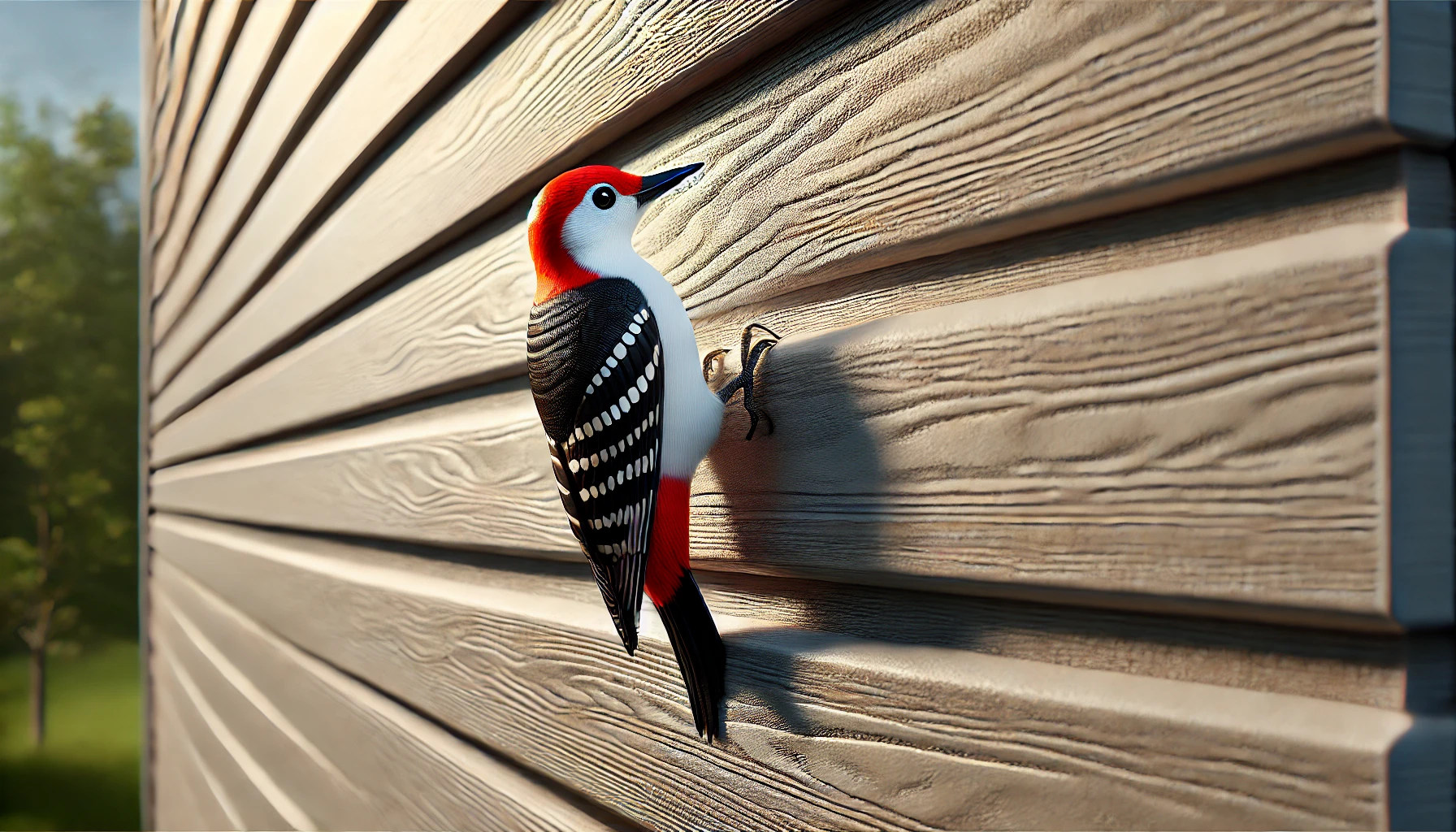Woodpeckers can be a beautiful sight in nature, but they can become a nuisance when they start damaging your home’s exterior. Woodpecker damage can be costly and unsightly, making it crucial to protect your siding effectively. At Phoenix Siding, we specialize in home external renovations, including the installation of siding that resists pest damage. In this article, we will explore how to protect your James Hardie siding against woodpeckers, helping you maintain the beauty and integrity of your home.
Understanding Woodpecker Behavior
Woodpeckers peck on siding for several reasons, which can help you understand why your home might be targeted. Firstly, woodpeckers search for food. They drill into wood to find insects and larvae that live inside. Secondly, they create nesting sites by carving out cavities in wood to raise their young. Additionally, woodpeckers drum on surfaces to mark their territory and attract mates. This drumming sound is also used to establish dominance and communicate with other birds in the area.
Common signs of woodpecker damage include small rows of holes, larger nesting holes, and the distinctive drumming sounds. These holes can make your home look unsightly and, more importantly, allow moisture and insects to penetrate the siding, leading to further damage.
Benefits of James Hardie Siding
James Hardie siding, also known as Hardie Board, offers several benefits that make it an excellent choice for protecting your home against woodpeckers.
1. Durability: James Hardie siding is made from cement, sand, and cellulose fibers, making it extremely durable. This composition makes it difficult for woodpeckers to penetrate, as the material is much harder than wood. Unlike wood, it doesn’t rot, warp, or become brittle over time, ensuring long-lasting protection for your home.
2. Pest Resistance: The non-wooden composition of James Hardie siding naturally resists pests, including woodpeckers. The hard, dense structure of the siding does not provide the insects that woodpeckers are searching for, and it lacks the hollow sound that attracts them for drumming. This deters woodpeckers from pecking and damaging the siding.
3. Weather Resistance: James Hardie siding is engineered to withstand extreme weather conditions. It can handle heavy rain, strong winds, and even wildfires, ensuring that your home remains protected regardless of the weather. This resilience contributes to its longevity and reliability as a protective barrier for your home.
By choosing James Hardie siding, you are investing in a product that not only enhances the aesthetic appeal of your home but also provides robust protection against woodpeckers and other pests. This makes it a practical and long-lasting solution for homeowners looking to safeguard their property.
Additional Protective Measures
Even though James Hardie siding offers excellent protection against woodpeckers, taking additional steps can enhance its effectiveness. Here are some measures you can implement to further protect your home:
1. Visual Deterrents: Installing visual deterrents can help scare woodpeckers away from your home. Common options include hanging shiny objects like aluminum foil strips, mirrors, or plastic owls and hawks near your siding. These objects can create reflections and movements that frighten woodpeckers, discouraging them from pecking at your siding.
2. Sound Deterrents: Using sound deterrents is another effective method. Devices that emit distress calls or predator sounds can help repel woodpeckers. These sounds mimic the presence of predators or other woodpeckers in distress, making the area less attractive for pecking.
3. Physical Barriers: Installing physical barriers such as netting or metal flashing can protect areas frequently targeted by woodpeckers. Netting can be placed over the siding to prevent woodpeckers from reaching the surface, while metal flashing can be installed at corners and edges where pecking is more common.
4. Regular Maintenance: Regularly inspecting your siding for early signs of damage is crucial. Promptly repairing any small holes or cracks can prevent woodpeckers from exacerbating the damage. Maintaining the integrity of your siding ensures that woodpeckers are less likely to find vulnerable spots to target.
Conclusion
Protecting your James Hardie siding against woodpeckers is essential for maintaining the beauty and integrity of your home. Understanding woodpecker behavior and implementing additional protective measures can significantly reduce the risk of damage. James Hardie siding’s durability, pest resistance, and weather resilience make it an excellent choice for homeowners seeking long-term protection against woodpeckers.
At Phoenix Siding, we are dedicated to helping you keep your home in top condition. If you need assistance with siding installation, inspection, or maintenance, contact us today. Our team of experts is here to provide you with the best exterior renovation solutions.



